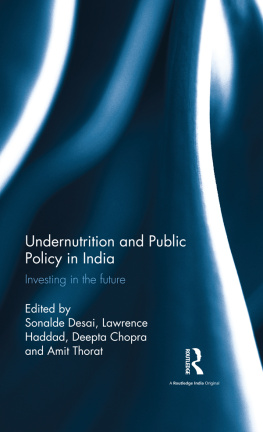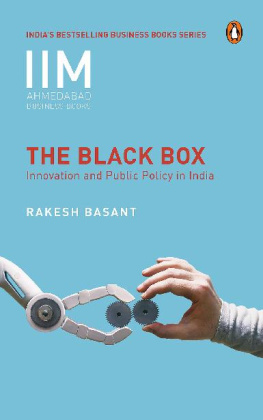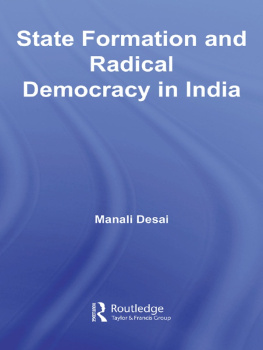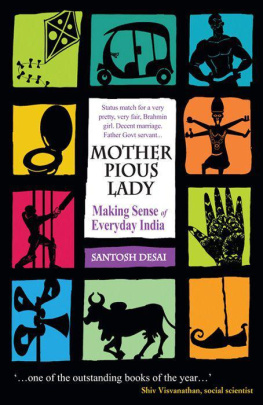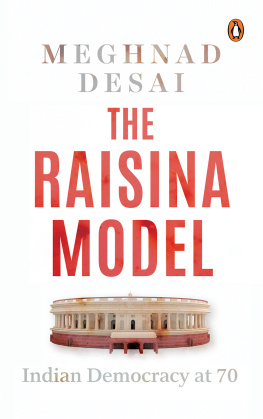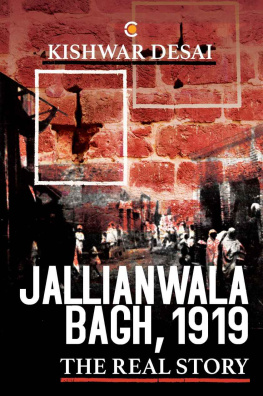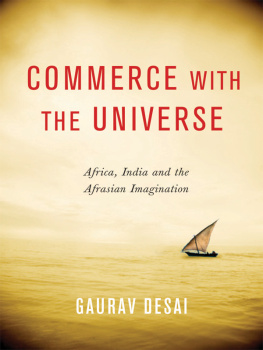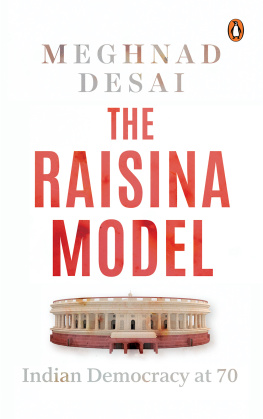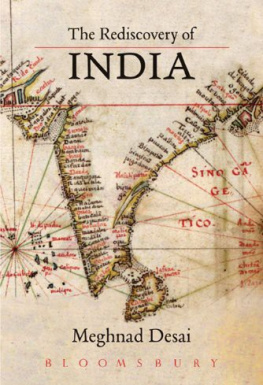Undernutrition and Public Policy in India
Despite substantial economic growth, India has one of the highest undernutrition rates in the world; it is home to almost 40 per cent of the worlds stunted children. This volume assesses the status and causes of undernutrition in the country, and examines the effectiveness of policies designed to address undernutrition. The chapters tackle wide-ranging themes and challenging issues including nutrition; water, sanitation and hygiene (WASH); maternal, neonatal and child health; Integrated Child Development Services (ICDS); public distribution system (PDS); crop procurement; and the National Food Security Act 2013.
With contributions from leading academic researchers, policymakers and civil society representatives, this volume will be indispensable to scholars, teachers and students of public policy, development economics, development sociology and Indian economy. It will also be useful to government institutions, think tanks and NGOs.
Sonalde Desai is Professor of Sociology at the University of Maryland College Park, USA, and holds a joint appointment as Senior Fellow at the National Council of Applied Economic Research, India.
Lawrence Haddad is Senior Research Fellow at the International Food Policy Research Institutes Poverty Health and Nutrition Division, USA.
Deepta Chopra is a Research Fellow at the Institute of Development Studies (IDS), UK, where she leads the work on womens and girls empowerment.
Amit Thorat is Associate Fellow at the National Council of Applied Economic Research, India.
First published 2016
by Routledge
2 Park Square, Milton Park, Abingdon, Oxon OX14 4RN
and by Routledge
711 Third Avenue, New York, NY 10017
Routledge is an imprint of the Taylor & Francis Group, an informa business
2016 National Council for Applied Economic Research, New Delhi
The right of National Council for Applied Economic Research, New Delhi to be identified as the author of the editorial material, and of the authors for their individual chapters, has been asserted in accordance with sections 77 and 78 of the Copyright, Designs and Patents Act 1988.
All rights reserved. No part of this book may be reprinted or reproduced or utilised in any form or by any electronic, mechanical, or other means, now known or hereafter invented, including photocopying and recording, or in any information storage or retrieval system, without permission in writing from the publishers.
Trademark notice: Product or corporate names may be trademarks or registered trademarks, and are used only for identification and explanation without intent to infringe.
British Library Cataloguing-in-Publication Data
A catalogue record for this book is available from the British Library
Library of Congress Cataloging-in-Publication Data
A catalog record has been requested for this book
ISBN: 978-1-138-95296-6 (hbk)
ISBN: 978-1-315-66754-6 (ebk)
Typeset in Sabon
by Apex CoVantage, LLC
Contents
SONALDE DESAI, LAWRENCE HADDAD, DEEPTA CHOPRA AND AMIT THORAT
PREMA RAMACHANDRAN
HARSH MANDER AND ASHWIN PARULKAR
AMIT THORAT AND SONALDE DESAI
DEAN SPEARS
A. A. CRONIN, J. H. RAH, F. M. NGURE, F. ODHIAMBO, V. M. AGUAYO AND S. J. COATES
SWARNA S. VEPA, BRINDA VISWANATHAN, SANDEEPTHA DHAS, VINODHINI UMASHANKAR AND R. V. BHAVANI
SHEILA C. VIR
VEENA RAO
N. C. SAXENA
RASMI AVULA, SUNNY S. KIM, RAJANI VED, MAMATA PRADHAN AND PURNIMA MENON
SATISH B. AGNIHOTRI
SANTOSH MEHROTRA
ARTI AHUJA
TARA KAUL
BIRAJ PATNAIK AND DIPA SINHA
Nothing is perhaps more of an urgent public policy challenge in India than undernutrition. According to the latest report on the State of Food Insecurity in the World (FAO, IFAD, WFP 2015), despite some progress made towards the Millennium Development Goal 1, India still has the second highest estimated number of undernourished people in the world, predominantly children under five years. How and why is this possible some 68 years after independence in a country which has seen relatively stable growth and a decline in the rate of poverty? These are the questions posed by the contributors to this impressive edited volume which critically examines the magnitude of undernutrition in India and assesses a range of interdependent structural factors that have sustained policy inertia, a lack of accountability, social discrimination and poor nutrition surveillance, particularly of children under five years.
At the heart of this debate, but a footnote in most policy discussions, is gender inequality. The links between womens triple burden of work, limited access to and control over productive resources, and the implications for her health status and that of her children are well established. Despite the plethora of public programmes in India that seek to address maternal and child well-being, enabling womens agency is not considered a sine qua non for successful implementation. Improving girls and womens access to education, facilitating womens participation in decision making at home or in the community and strengthening her access to markets and livelihoods, while challenging all forms of gender violence, are critical to better nutrition outcomes.
On a related front, emerging global empirical evidence suggests a strong correlation between access to safe water, sanitation and improved hygiene behaviour, and indicators of malnutrition such as stunting. Not only is India home to the largest number of stunted children in the world, the majority of its population continues to practice open defecation. However, while access to WASH infrastructure and services is important in themselves, most WASH interventions are not designed to protect children in the first 1,000 days window from ingestion of faecal bacteria. Working with community-based animators, building ownership for WASH infrastructure and educating caregivers on the faecaloral route of transmission are key to ensuring early child survival.
The links between agriculture, food and nutrition security are well established, yet little attention in terms of research or resources has been paid to rain-fed agriculture, the lifeline of millions of small and marginal farmers in this country. Supported by Canadas International Development Research Centre (IDRC), this book complemented research on finding innovative solutions to food and nutrition security under the first phase of the Canadian International Food Security Research Fund (CIFSRF) launched in 2009. Research in India focused on small millets which once accounted for nearly 30 per cent of the area devoted to grain cultivation, but now cover less than 18 per cent. With growing recognition of their health benefits, improved access to drudgery reducing small-scale technologies, particularly post-harvest and sustainable value chains for millet-based products, cultivation of millets is gradually increasing. But millets are only part of a diversified diet kitchen gardens, fish ponds, farmyard poultry and goat-rearing are providing farmers with alternative sources of nutrients, proteins and livelihoods.
As researchers look to scale up successful solutions in a second phase and as several of the authors in this volume emphasise, it is imperative to understand policy challenges in a changing political environment. Coalition building or learning alliances are instrumental for civil society actors seeking to address convergence across key sectors and institutional terrains engaged in a range of nutrition interventions. Data accountability, timely nutrition surveillance, monitoring of public expenditure and improving service delivery are all integral to good governance for better nutrition outcomes. The contributors to this book have been associated with public policy debates in India for long and they bring their learning, experience and analytical skills to a volume which will be indispensable for decision-makers, researchers and development professionals. On behalf of IDRC, I would like to thank all the authors, and particularly the lead editors, for their considerable efforts in pulling together this valuable book.

